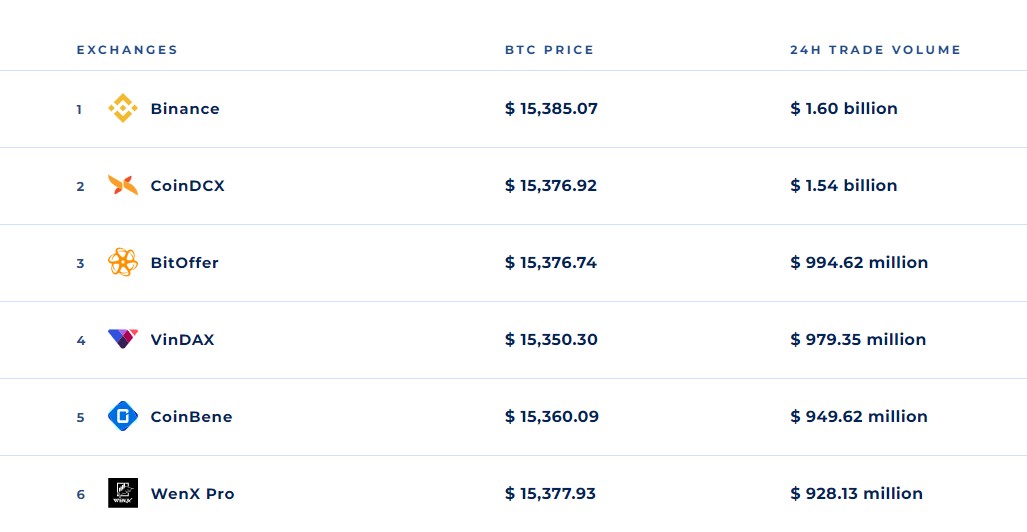
Arbitrage is a term used to describe a profit-earning trading method that takes advantage of imbalances in prices between markets. Cryptocurrency and Bitcoin (BTC) arbitrage similarly take advantage of pricing differences in digital assets on crypto exchanges.

Crypto arbitrage exploits the fact that cryptocurrencies can have significant price differences depending on the exchanges that sell them. In simple terms, crypto arbitrage occurs when an asset like Bitcoin is simultaneously bought and sold in two markets—the same asset bought for a lower price on one exchange and sold for a higher price on another to profit on the price variance.
Cryptocurrency and Bitcoin Arbitrage: An Overview
Bitcoin and cryptocurrency trading are huge, with billions of dollars worth of crypto being transacted in millions of trades. There are dozens of exchanges now operating globally that provide crypto services. However, there can be significant differences comparatively on exchanges for the prices of digital currencies listed—making the crypto industry ripe for arbitrage.
Arbitrage traders take advantage of the price differences on exchanges and play these variances off each other to make a profit. For example, an exchange like Binance may list Bitcoin for $15,200 while Kraken lists the BTC for $15,000 at the same time. An arbitrageur will buy the lower Kraken price and sell on Binance to make a quick profit of $200. This is called spatial arbitrage.
Sounds easy, but of course there is more to it than that otherwise, we would all be rich. Bitcoin arbitrage, in particular, was far easier in its early years, as the price of BTC would fluctuate wildly from exchange to exchange, with much wider price gaps for traders to exploit. In crypto arbitrage, it is all about speed. The example above is quite exaggerated and such a clear gap in price is unusual, however, given the extent of decentralization in the crypto sector, such discrepancies can happen very frequently.
The smaller price gaps between that do exist do not last very long. Arbitrageurs need to be quick to take advantage of these gaps which creates the risk, but if timed correctly, the profits can be huge.

BTC Price variance between exchanges: Source - Coinrankings.com
A recent example where crypto arbitrage was rampant occurred when Filecoin was first launched on exchanges in October 2020. The discrepancy in price was massive—the price of a single Filecoin (Fil) on exchanges varied with Fil on Uniswap trading at $25.56, and Gemini exchange pricing Fil at $29. Although it is not relevant to arbitrage, even popular crypto price aggregators had little consensus on the price of Filecoin and Fil was $68 according to CoinMarketCap while competitor CoinGecko had priced Fil at $29.
Types of Crypto Arbitrage
There are three main types of crypto arbitrage—the first is called spatial arbitrage, which is the most common and takes advantage of the price imbalances of exchanges and we have discussed this in the previous section.
The other two methods are cross-border arbitrage and statistical arbitrage.
Cross-border arbitrage is similar to spatial arbitrage with the key difference being that the two exchanges being played off one another are in different countries. Arbitrageurs often have difficulty in executing cross-border arbitrage as the countries that put a higher premium on some assets are usually able to do so as the users cannot access outside markets, which means it may be difficult to move assets between these markets.
Statistical arbitrage is the most sophisticated method but also carries the most risk and is heavily reliant on speed and is based on mathematical modeling. This technique employed by crypto arbitrageurs involves using trading bots and algorithms that capitalize on pricing discrepancies that may only exist for the briefest moment.
Triangular Arbitrage
As any two cryptos can be trading pairs, any other crypto can be a medium of exchange. This type of arbitrage is called Triangular arbitrage.
Triangular cryptocurrency arbitrage is a popular method that allows the trader to remain on one exchange and avoid and exchange withdrawal fees or delays in transfer.
The crypto arbitrageur takes three different cryptocurrencies after identifying that one or more of these currencies is undervalued. A trader may see an opportunity involving Bitcoin, XRP, and ADA and would trade his BTC for XRP, then in turn use the XRP to buy ADA and then use the ADA to buy back the BTC. If they were able to effectively leverage one or more undervalued cryptos in the triangle, they should end up with more BTC than when they began.
The main advantage is that in all triangular trades, a trader gets a riskless profit as soon as the second trade is fulfilled. However, it should be noted that this type of arbitrage is rare and is definitely not easy—which is why modern crypto and Bitcoin arbitrage traders prefer using bots and software. Also, triangular arbitrage needs to consider risky price fluctuations of the crypto as the exchange medium.
Arbitrage Opportunity Extension—Bots and Tools
As mentioned, Bitcoin and cryptocurrency arbitrage are all about speed, and price spreads may only exist for an incredibly short period of time. To execute cryptocurrency arbitrage effectively, a trader will have to be able to compare all prices in real-time across exchanges to configure and submit their trade before the gap disappears.
As volatility subsides and the crypto market reaches greater maturity, attempting to trade in these gaps manually in 2020 and make a profit is near impossible.
With time, arbitrage now evolves into a mature way of profit with complex arbitrage algorithms and tools.
Besides searching for arbitrage opportunities by relying on experience, veteran traders also now commonly leverage Bitcoin arbitrage tools with which, they can set different arbitrage parameters and these rules will be triggered automatically when the requirements are met.
Arbitrage Market in Decentralized Exchanges (DEX)
Compared to centralized exchanges, there are significant differences in price models and pricing mechanisms in DEXs. Most DEXs use automated market makers (AMM) instead of the traditional order book model.
The pricing mechanism of AMM is different as well. Take the leading DEX Uniswap as an example, it uses Constant Product Formula (CPF) to determine the price and price changes.
The new DEX price model and pricing mechanism bring new opportunities for arbitrage as well as new complexities. But in essence, all arbitrages are based on the price difference of any given crypto.
Actually, arbitrage is encouraged in decentralized exchanges to make its price system more stable. In Uniswap V2, the DEX introduced flash swaps that allow users to withdraw up to the full reserves of any ERC20 token on Uniswap and execute arbitrary logic at no upfront cost. These flash swaps obviate upfront capital requirements and unnecessary order-of-operations constraints for multi-step transactions involving.
Uniswap also encourages the use of trading bots. These crypto arbitrage bots seek profits by comparing prices across different platforms to find an edge in value and execute the trade quickly.
As most decentralized exchanges are based on Ethereum, there are no direct non-Ethereum arbitrage opportunities. But there are wrapped tokens. Wrapped Bitcoin (WBTC) is an example that reserves the power of Bitcoin while inheriting the flexibility of an ERC20 token and which is backed 1:1 with Bitcoin 100% and verifiable.
Is Crypto Arbitrage Legal and Worthwhile?
Crypto arbitrage opportunities arise from exploiting mispricing between exchanges, but the practice is completely legal. So why doesn’t everyone do it?
There are many factors to consider for crypto arbitrage, for instance, exchange platforms used will normally charge fees for transactions and often withdrawal fees. As the gaps necessary for profit are so small, failing to factor in these fees by traders could see a loss of profit.
Time is of the essence and another concern with exchanges can be delays that can be associated with executing withdrawals. Crypto arbitrageurs have a limited time frame to get funds from one platform to another, a delayed transfer could cost the trader all expected profits.
Other factors that need to be considered are regulatory—particularly for cross-border arbitrage as there are different KYC and AML compliances for different jurisdictions.
Crypto arbitrage is not for new and inexperienced traders and those who have plenty of experience in the marketplace are known to have higher levels of success. New traders may see the possibility of capitalizing on a price inconsistency but often fail to consider the myriad of factors above—fees, regulation, and timing.
Image source: Shutterstock